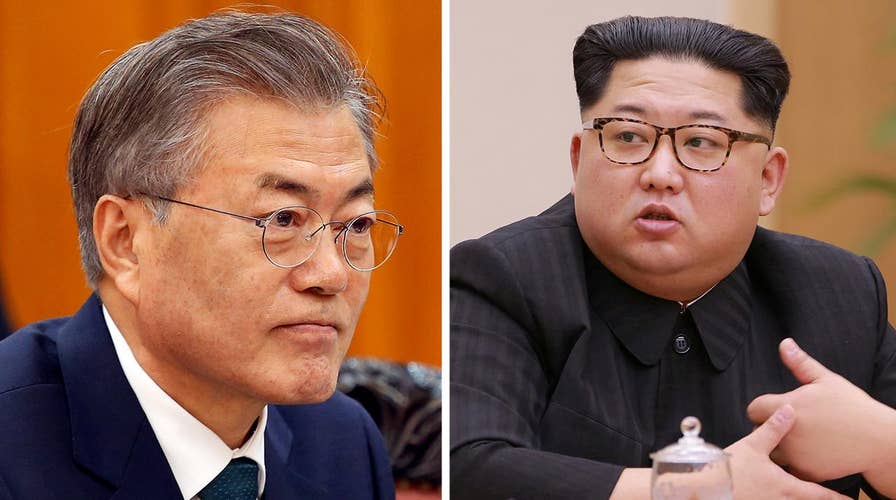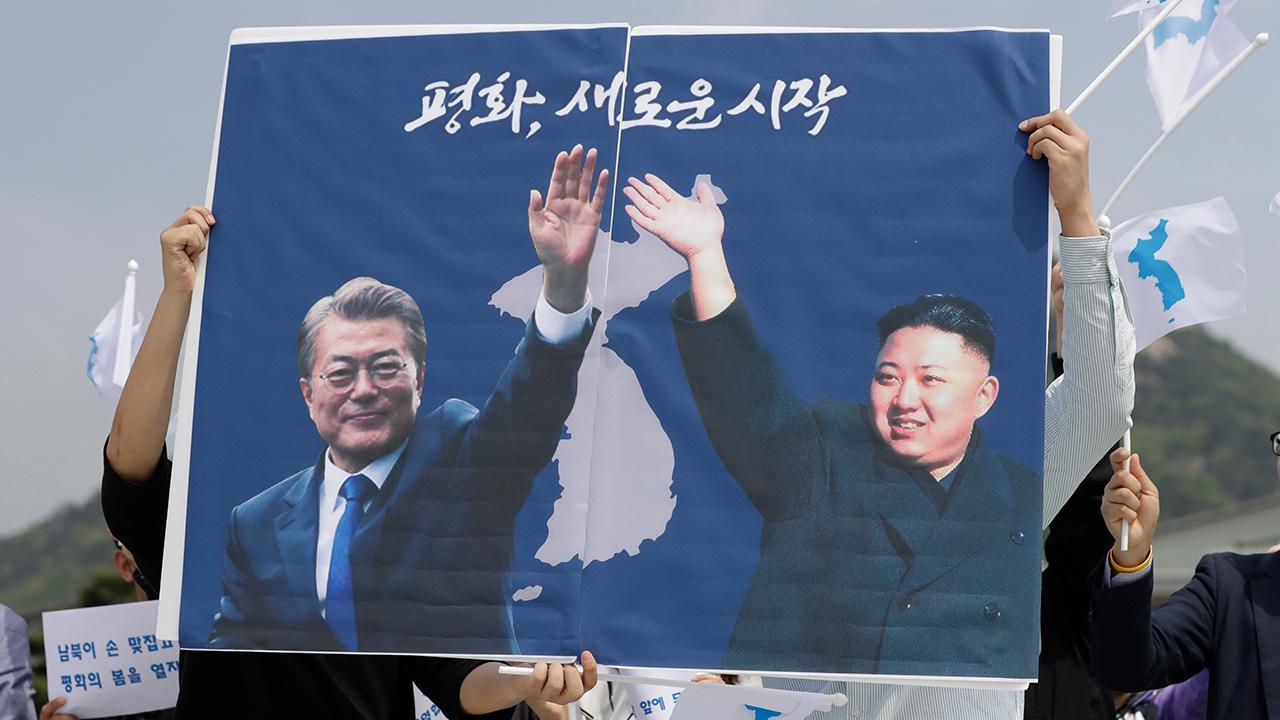Leaders of South and North Korea to meet Friday
Last-minute preparations under way for the inter-Korean Summit involving South Korean President Moon Jae-in and North Korean leader Kim Jong Un; senior foreign affairs correspondent Greg Palkot reports.
The summit Friday between North Korean dictator Kim Jong Un and South Korean President Moon Jae-In will be historic – only the third time leaders of the two Koreas have met since the peninsula they share was divided into two nations in 1948. The last summit was in 2007.
No one expects the meeting will fundamentally change the status quo on the Korean Peninsula, but the fact that Kim and Moon are talking rather than waging war is a big plus. And both sides are likely to come away with some important concessions as they seek to ratchet down tensions.
The Kim-Moon summit (beginning Thursday night, U.S. time) also sets up the bigger summit yet to come: a meeting between President Trump and Kim, expected in late May or June.
All this is a far cry from fears expressed last year by many foreign policy experts – me included – that there was a strong chance a nuclear war in Northeast Asia was in the offing. Such a horrific war could potentially leave millions of people dead in the region and possibly even spread to the United States. I’m extremely happy we were all wrong about that.
Here are four reasons why the North-South summit will go down in history.
1. The summit – a highly scripted affair – will have an air of historic progress.
When it comes to the intricacies of high-level diplomacy – especially at the leader-to-leader level – nothing is left to chance.
As a former senior staffer in the Obama White House told me: “Summits are highly ritualized affairs – short most of the time on real substance, but big on ceremony and turning points in history. They are markers for where we were, where we are and where we could be going when it comes to foreign policy. They represent our best hopes for the world we want to live in – this is the best way I can describe how the Kim-Moon summit will turn out.”
The Obama administration official went on to predict: “There will be many photos for social media to share, lots of video to stream that the media will eat up, but this will not be a transformative summit. It will convey, however, an air of historic progress that could sweep over the Korean Peninsula – and that is a good thing.”
One former senior official in the George W. Bush administration was more optimistic, telling me: “Any time you get the leaders of North and South Korea in a room that is history. That means there is less of a chance of war, that at the very least tensions are cooling for the short to medium term. Who cares if there is no big progress made? The meeting is progress.”
2. Kim wants to show the world he is an international statesman – and he is desperate to clean up his image.
As someone who has worked in communications for part of my career, I can spot an image makeover when I see it. And right now, Kim is working overtime to try to remake his image.
At least since his New Year’s Day speech – when he ditched his usual Mao suit for a fancy Western-style suit – Kim has been trying to show the world that he has turned over a new leaf.
Kim’s media-focused strategy is designed to show the world that he is a real international leader to be respected and worthy of bargaining with – not the head of criminal crime family that has over 100,000 people in political prison camps, many of them tortured and starving.
Kim will do all he can to project his new image through widely shared imagery during the summit, through talks that will be streamed at least partially online, and through statements of peace and brotherhood during the summit.
Kim 2.0 will try to seem nothing like the hyperbolic dictator threatening nuclear war and denounced in the past by President Trump as “little rocket man.”
3. Both sides are likely to talk about possible future investments, trade and getting rid of those nukes.
This is where history could truly be made. The North Koreans are surely looking for investment from the South to rebuild their economy, which is less than 1 percent the size of South Korea’s.
Major South Korean investments in the North are out of the question now. But there is a possibility that Seoul could drop some of the unilateral sanctions it has in place, and could consider reopening joint North-South projects that were closed in past times of tensions.
All of this would be tied to North Korea’s progress towards denuclearization. The big news out of this summit could be Kim himself saying directly that he is either willing to discuss it or even signal in concrete terms that he will give up his atomic arms – for the right price.
That would be a game-changer, potentially paving the way for what could be an economic boom for the entire Korean Peninsula.
With North Korea holding the potential of trillions of dollars in untapped underground mineral resources and a massive labor force, South Korean businesses are certainly eager to gain access to and domination of this potentially lucrative market. Friday’s summit could be the start of much larger business relationship that both sides would relish.
4. Finally, the stage will be set for a truly historic moment – the Kim-Trump summit.
While the inter-Korean summit is a truly momentous affair, the history books are waiting to fill out their pages with the real show stopper – the big U.S.-North Korea talks that will most likely come in the next few weeks.
In boxing terms, the Kim-Moon meeting will be the undercard – the Kim-Trump summit will be the main event.
When – and if – President Trump and Kim Jong Un step into the same room, it will be the first time a sitting American president and a North Korean leader have met.
There’s no way of knowing what will come out of this meeting. A photo op? Bland speeches saying nothing? Or the real beginning of a relationship that could lead to North Korea taking the extraordinarily unlikely step of abandoning its nuclear weapons.
Clearly, the most important part of Kim and Moon’s discussions will be to help set an agenda for the meeting between President Trump and Kim. South Korea has done all it can to act as a bridge between America and North Korea, and Friday’s crucial inter-Korean talks will serve as a big springboard for what is to come.
I would assume that in the parts of the summit that are not televised live, Moon will likely press Kim to find out if the dictator is truly willing to give up his nuclear weapons and – if so – what timetable the North would agree to do so.
And Moon is also likely to ask if Kim would allow intrusive international inspections of any denuclearization. South Korea’s president should be able to get a sense whether Kim is willing to make a deal – or whether this is all a giant trap.
And if that is the case – and Kim is still unwilling to clarify his intent on getting rid of his nukes – President Trump needs to follow through with his pledge to walk away. Then some real history will be made, as we will have finally ascertained North Korea’s real intentions.


